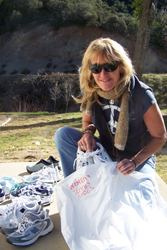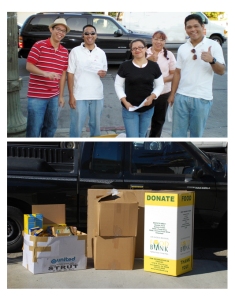Blog Information Profile for spanishformedical
Regional and Abroad Medical Spanish classes for the busy healthcare industry. Two locations which offers a unique and different experience. If you don’t have a lot of time sitting in a traditional Spanish classes (semester types), Spanish for Medical offers an alternative. This course is ideal for any healthcare provider which comes in contact or communication with Spanish speaking patients. We have courses for beginners, intermediate, and advance. The courses have a combination of general Spanish plus Medical Spanish terminologies.
Our Regional Medical Spanish courses (Los Angeles / Southern California) emphasizes on the structure of general Spanish to medical terminologies from; beginners, intermediate, and advance. In addition, we also emphasize the importance of time. Because many of the medical professionals are limited on time, we have structured the program to make it convenient for the Medical Spanish student. Also, the program is effective and practical for the Medical Professional.  The company offers an on-site or off-site learning experience taught by highly qualified Bilingual Spanish teachers. It’s easy to use unique Medical Spanish Manuals, poster-sized color drawings, vocabulary flashcards, audio CD’s, and soon online Inter-active; make the learning process fun and educational. Contact Spanish for Medical for more details on the “Mobile Medical Spanish Courses”
The company offers an on-site or off-site learning experience taught by highly qualified Bilingual Spanish teachers. It’s easy to use unique Medical Spanish Manuals, poster-sized color drawings, vocabulary flashcards, audio CD’s, and soon online Inter-active; make the learning process fun and educational. Contact Spanish for Medical for more details on the “Mobile Medical Spanish Courses”
Learn Medical Spanish Costa Rica
Today’s medical professionals must adapt to meet the challenges that come with the growing diversity in the health care population demographic. Some of these challenges are not only linguistic but also cultural at their root. This often necessitates that health care providers learn to clearly and effectively communicate with patients and their relatives in a second language.
The reality for many health care professionals is that Spanish is the first language of a large percentage of the population served. Mis-communication and misunderstanding of critical information can have a negative impact on every day patient care, not to mention situations where matters of life and death are at stake. Possessing the ability to speak basic Spanish will reduce the need for providers to enlist the services of an interpreter for common everyday communication tasks.
We at Spanish for Medical are in agreement with traditional academic institutions that one needs to study the basic rules of grammar, vocabulary and other key fundamentals of Spanish to learn the language. However, much of the traditional curriculum in high school and college is based on rote memorization. We believe a key component is missing – namely an emphasis on verbal communication and in addition to that a practical understanding of cultural values and assumptions.
Our Study Abroad program emphasizes and integrates both components via classroom exercises and the Immersion Method. Immersion Method is when a student is surrounded by nothing but the culture and are constantly speaking Spanish in places such as local shops, markets, gyms, bars, restaurants, school, and with their host families. Students find themselves applying their newly acquired skills on an everyday basis with appropriate feedback from their professors as well as the people around them. This method allows the student to hone their abilities in a supportive and relaxed environment.
Why Study Medical Spanish Abroad?
How studying abroad differs from traditional techniques:
1) The student finds himself or herself immersed in the language and the culture.
2) Classes are on a smaller scale (max of 6 students per class) which lowers the teacher to student ratio and allows the instructor to give greater personalized attention to each student.
3) Classes are 4 hours a day. Since classes are covering a single subject, more hours do not necessarily translate into more effective learning. Students need time to absorb and integrate what they have studied.
4) Each student has the option to stay with host families and thus gain insights into everyday life, values and assumptions Latino culture. These are, in some ways, just as important to learning as understanding the technical details of the language itself.
5) There are plenty of enjoyable activities such as biking, hiking, swimming, running, aerobics, yoga, dance classes, cooking classes, white water rafting, kayaking, snorkeling, fishing, horseback riding, surfing, etc… available through the program.
6) Classes taken with language programs can be transferred for credit depending on your schools requirements.



 See Pictures From the Project
See Pictures From the Project





